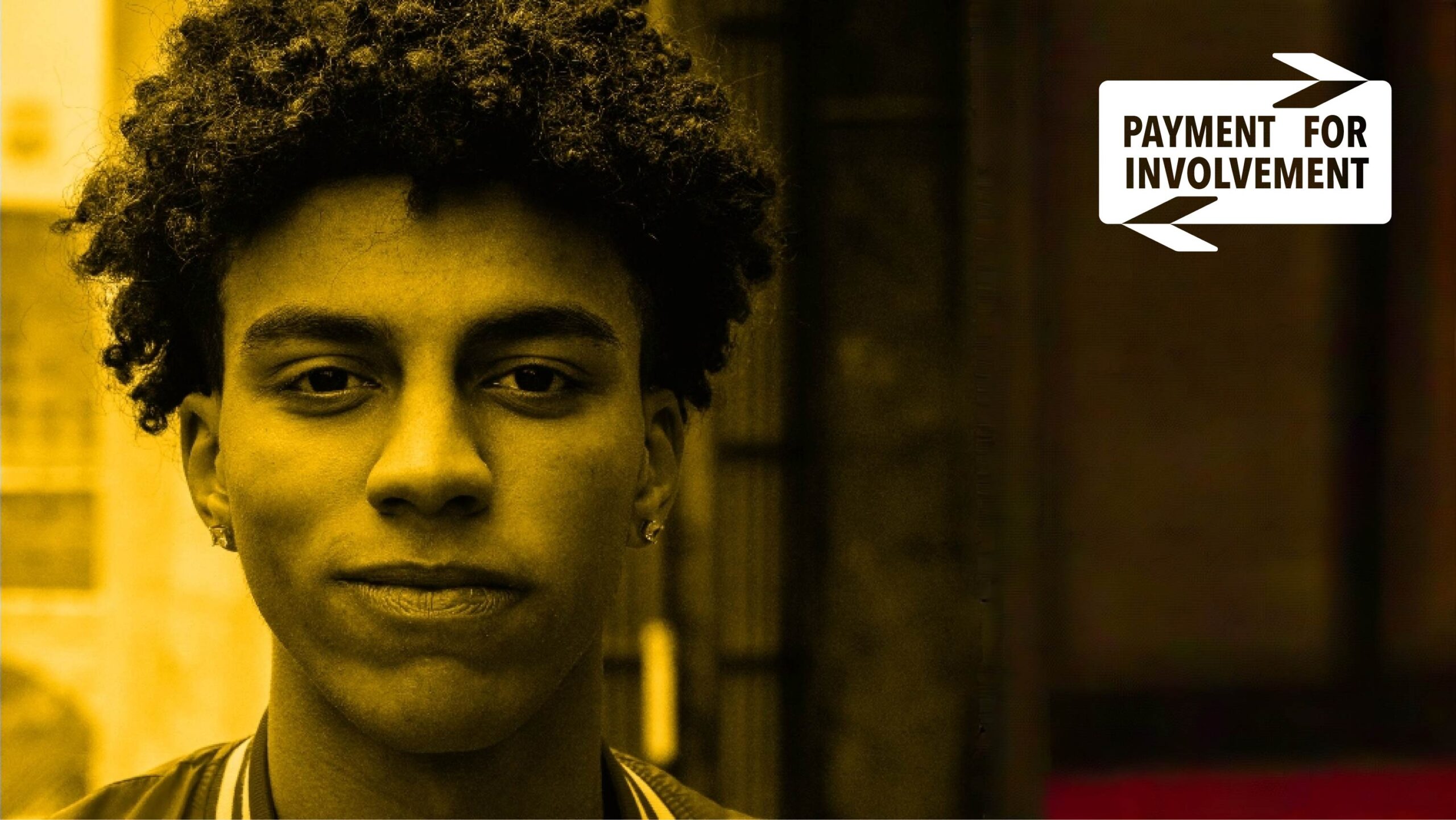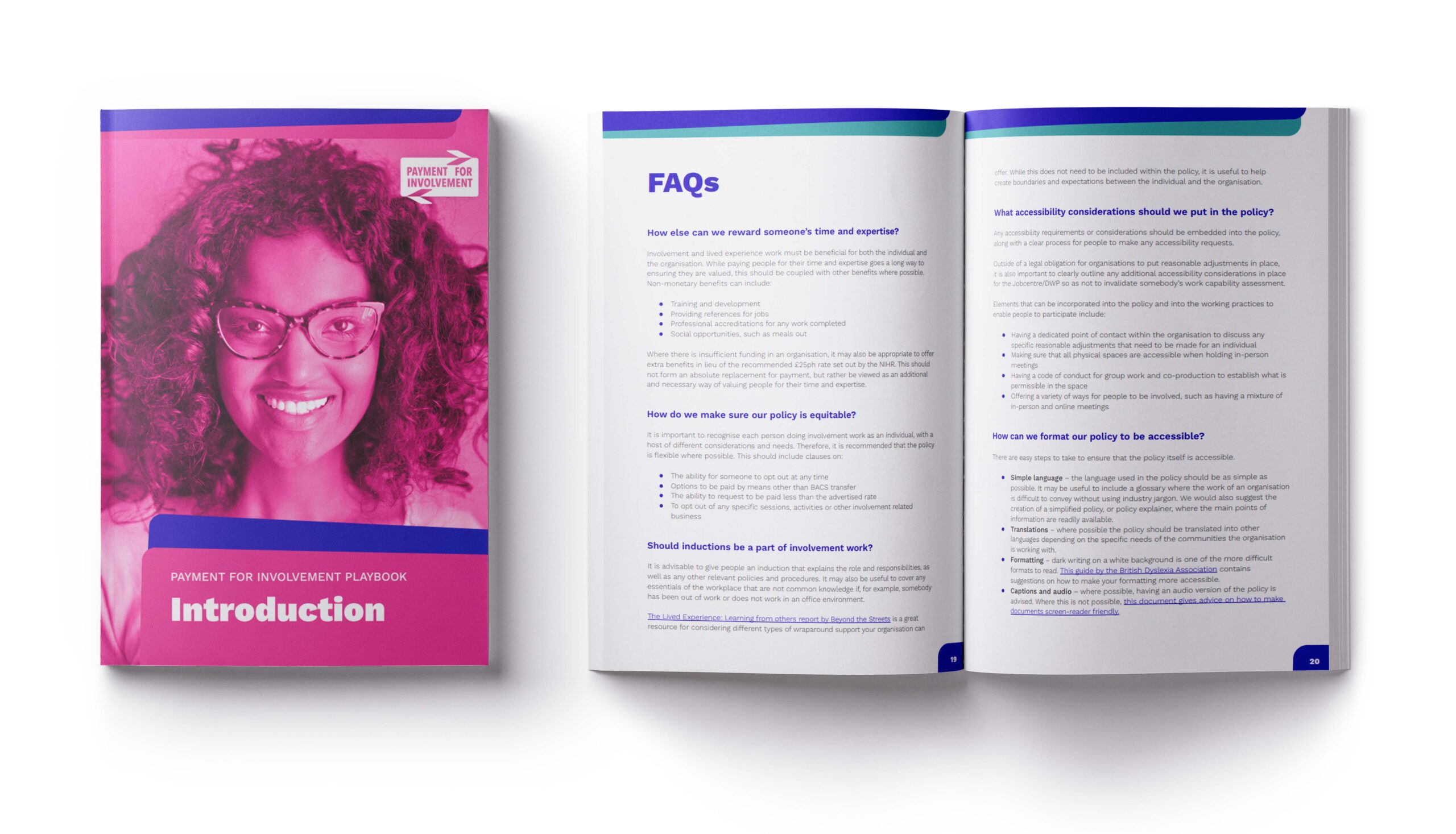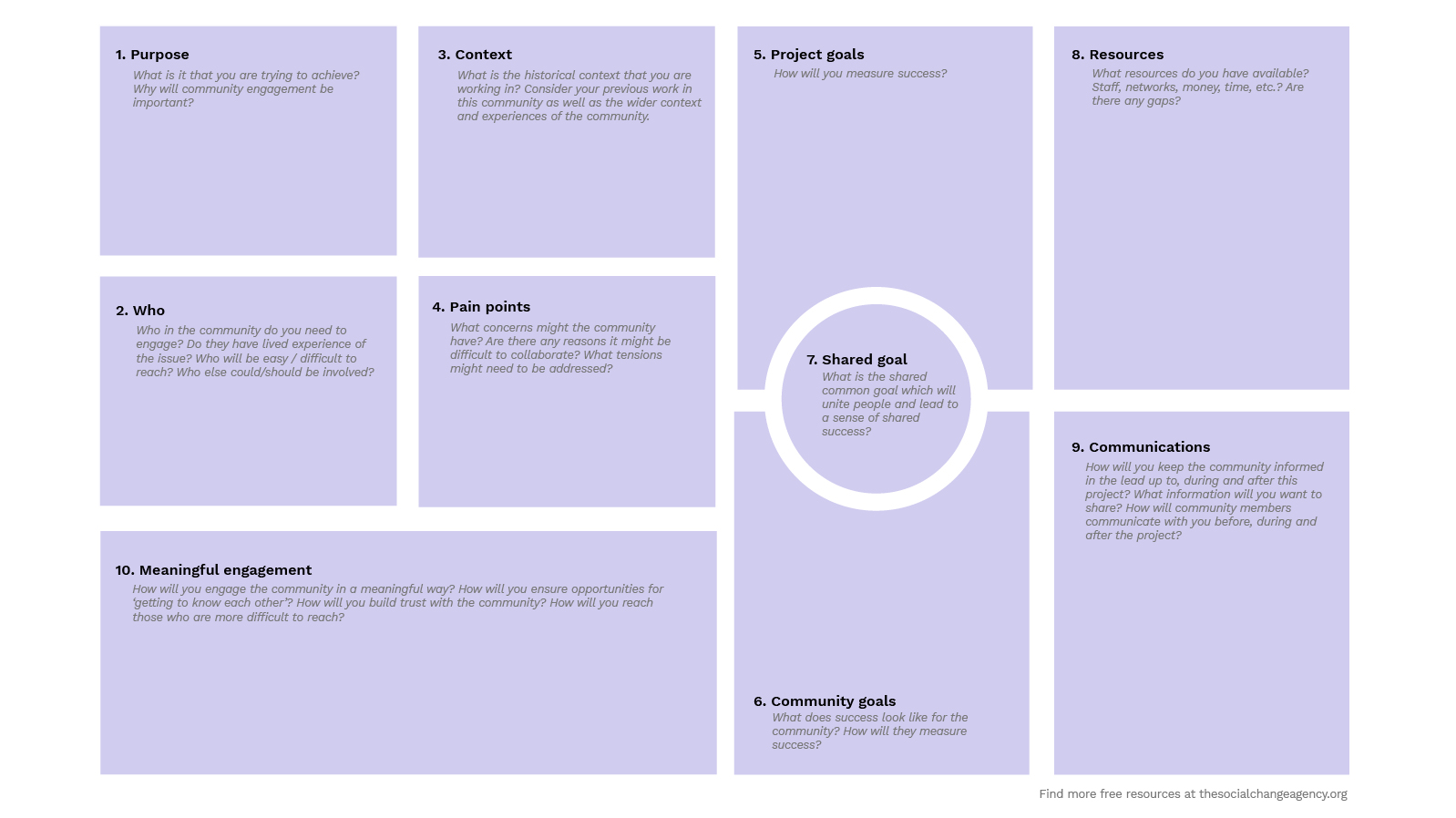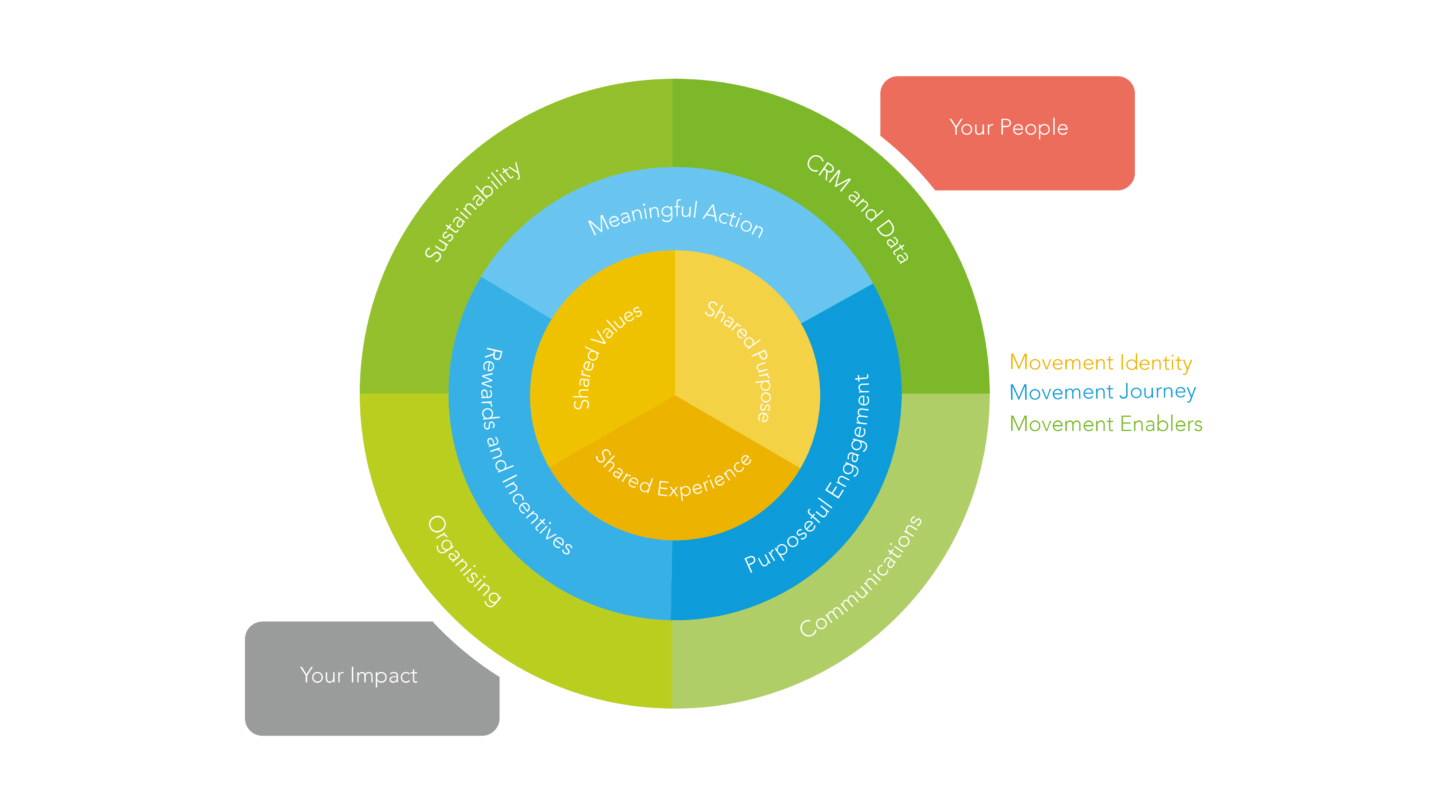Valuing lived experience and paying people for their involvement – Key learnings from Bristol City Council

Jump to:
> Listen to the podcast episode
> Get the snapshot of key takeaways
> Read the transcript
Today we’re talking about the mammoth topic of Payment for Involvement, part of our Payment for Involvement podcast series that we’ve been running over the past couple of months since the launch of the payment for Involvement playbook.
In the previous episode, we explored why it’s so important for organisations to recognise and value lived experience and to pay people for their involvement.
In this episode we’re joined by three, absolutely brilliant guests from Bristol City Council. They share their journey of creating and implementing a payment for involvement policy in a local authority and discuss the practicalities of how you actually pay people as well.
This episode is really jam packed with insightful learnings from their first hand experience. So whether you’re from a local authority, a nonprofit, or really just any organisation that’s looking to engage more equitably and fairly with the communities that you’re serving, you won’t want to miss it.
Summary & key takeaways (tldr)
Ellie, Megan and Rob from Bristol City Council discuss how they moved from an ad-hoc to a structured approach to payment for involvement that began with their Community Resilience Fund where they compensated 100 residents for their involvement in decision-making.
Main challenges of paying individuals for their involvement:
-
- Managing liability issues (initially falling on payment recipients)
- Navigating complex bureaucracy and regulations
- Making digital payment platforms accessible to everyone
- Getting proper approvals within the council structure
Key advice for other organisations:
-
- Get senior leadership buy-in early
- Engage with DWP (Department for Work and Pensions) from the start
- Pay people the real living wage
- Be transparent about potential impacts on benefits
- Allow enough time for setting up proper processes
- Consider using fiscal hosts like The Social Change Nest to handle payments
Episode transcript
Ellie: Hi everyone. My name’s Ellie Stevens. I’m Community Resources manager at Bristol City Council.
Megan: Hi everyone. I’m Megan. I’m a transformation and commissioning officer for co-production within Adult social Care at Bristol City Council.
Rob: Hi, I’m Robyn Taylor. I’m a V-C-S-E Investment and Social Action Officer, but I also project manage the Community Resilience Fund (CRF).
Getting started with Payment for Involvement
Saoirse: Great. Thanks so much all. Well, we’ll jump right into it then. Can you tell me a little bit more about your journey with paying people for involvement? What went into that and also your experience of developing a payment for involvement policy?
we knew from the very beginning of that project that it was going to be really important to us that people were paid for their time and involvement
Ellie: Yeah, absolutely. So thinking a bit about our journey and where it started, Robyn and I both worked together on a project called the Community Resilience Fund, which Robyn mentioned, which was a grant of 4 million pounds. And in order to decide how that grant was spent, we ran a participatory grant making process involving a hundred residents from Bristol who were all from diverse backgrounds, some from the volunteering community sector, but mostly just passionate citizens who cared about their communities and wanted to see that funding go to the right places. And we knew from the very beginning of that project that it was going to be really important to us that people were paid for their time and involvement and for bringing their lived expertise to the decision making process. We also really wanted to make sure that we included a diverse range of people in that process and that offering payment would diversify who got involved and enable people to participate.
So by paying expenses and things like that, we knew that we would cover childcare costs, be able to cover transport costs, et cetera, and bring in a different pool of people who wouldn’t have showed up if it had been voluntary. Having said that, that’s kind of where it started. Obviously people had been paid for involvement in Bristol City Council project before that, but I think what the difference was that it had been happening on quite an ad hoc basis. The majority of projects had paid people or acknowledged people’s contribution using vouchers and hadn’t given options or anything like that. And there hadn’t really been much exploration about what that meant for the participants and what accepting payment might do to them and what impact that might have on them. So it was really beginning of our journey around understanding what payment for involvement really meant for the people that accepted it. But Megan’s done a lot more work around the policy and further steps since the Community Resilience Fund project.
it was all about trying to involve the people who use the services in actually design and delivery
Megan: So I had the good Fortune basic, well, I used to work with Ellie and Robyn, and so I sit very near them some days of the week, and I’ve heard a lot about their development of CRF, and part of that was around payment for involvement, and they asked me to facilitate a table in CRF, so I got to see it in action. Then I started in a post within adult social care, and it was all about trying to involve the people who use the services in actually design and delivery. So those voices need to be embedded way earlier in the process. They need to actually design things from the beginning. And part of that instinctively for me was around paying people to do that because there are lots of organisations, there’s a lot of, and I use air quotes here, but a lot of professionals who get paid to be in the room to do that sort of service design and delivery. But if we wanted to get the people with lived expertise of using those services voices in there, but have them in a kind of an equitable space, then they really needed to be paid. Other people in the room were paid as well. I took the learning and the research and the work that Ellie and Robyn did and have developed that a little bit further for this current project that’s going on.
Saoirse: Megan and Ellie, you touched on it a little bit there, but what were the specific challenges that you faced? Maybe if you think back to right at the beginning of when you were planning on doing these projects. I know you’ve mentioned that the council was already doing payment for involvement type stuff, but it was maybe on a bit more of an ad hoc basis, or was taking a little bit more time just because of the processes, the local council and stuff like that. But it’d be great to hear of any other kind of challenges or if you want to dig into those ones a little bit deeper as well.
it enables people to take part that wouldn’t be able to otherwise
Robyn: For the CRF, the things that we were grappling with is that essentially the liability fell with the recipients of the payment, which we didn’t feel was particularly fair. And it’s been great that Megan has been able to take steps to avoid this in the future and work out where the liability sits and not putting the onus on the participant, but there’s something else that I’ve found that we really learned since the CRF as well, but that it’s just really not simple and there isn’t a standard policy or practise that currently across the board, not even just in Bristol City Council and there are loads and loads of grey areas. It’s really helpful to reflect that. We spoke to lots of different people when we were developing the guidance to payment for involvement in the council, but also in the voluntary sector. And there is a lot of flexibility that the VCSE sector has that local authorities just don’t, we don’t have that luxury unfortunately. But because local authorities, it is great to see that we are wanting to pay people for taking part more and more. And so there is definitely a need for clarity around doing it fairly and it’s clear that it has just massive benefits to get people involved and it enables people to take part that wouldn’t be able to otherwise. And it just really encourages that diversity, which was so important for the CRF.
Create a policy for your organisation with our free Payment for Involvement playbook!
The challenges of paying individuals directly
Saoirse: I feel like when I started doing this work a year ago, I really thought it was deceptively easy at the very beginning, and then the more you start digging down into it and the more you think about the complexities the various different people are bringing because of the system that we live in, it suddenly becomes a big kind of ball of string that you’re constantly trying to untangle, while other people are tangling it at the other end.
Moving on, it’d just be good to hear a bit about your experience of using The Social Change Nest, specifically using the fiscal hosting service and the Open Collective side of things. It’s okay if you also have negative things to say. It’s not, don’t also have to be saying a hundred percent positive things. They might get cut out by the marketing manager at the end, but I’ll take any feedback that I can take as well. It’d be great to hear just about experience of using the platform and using our services
it can be really tricky to pay individuals to pay money into individual bank accounts
Ellie: For us. I think with the Community Resilience Fund, it really solved a problem and it can be really tricky to pay individuals to pay money into individual bank accounts and especially for a local authority where there are rules around the way that we spend our money and how we distribute money. And in that way, it was a really useful tool. It was definitely something I was having sleepless nights about how we were going to do it. Having said that we would, so it felt like a bit of a saviour in that way. We did sometimes find that for some participants, as Megan’s kind of said, depending on accessibility needs and things like that, it was a tricky thing to get used to. Obviously it’s a digital platform, so we did offer one-to-one help for some people who felt less confident online or weren’t so used to using new websites and new platforms, but we gave clear instructions to everyone and actually you guys helped us with that in terms of providing video guidance and things, which I know that participants used.
So I think we managed to overcome that issue in most cases, and most people felt able to use the platform and because everything was in one place administratively, it was very easy. So we could just put an hour aside, log in, approve all the expenses and claims at once, and also see our balance really clearly, which I know it sounds crazy, but that is something that with some software and platforms can be quite cryptic. So it was a visually clear thing. And I personally really like the idea of the transparency as well.
the sheer amount of paperwork that’s needed to make sure that everything is legitimate above board
Megan: Yeah, it is been an interesting process. I know it was quite early on, so it was one of first councils to use Open Collective in that way. And obviously I think that’s changed a bit by the time that I started reaching out to The Social Change Nest to see whether it would be a possibility for this specific project with adult social care. And I think it took quite a long time to get things set up in a way. And I think it goes back to what we were talking about earlier, just the sheer amount of paperwork that’s needed to make sure that everything is legitimate above board, everything’s covered that is needed. And I think that was on both of our ends that time scale kind of spanned that longer time. And yeah, I think that’s just something I wanted to flag up to people that I think particularly if you’re coming from a local authority or maybe a larger organisation where there are more rules around how money is being spent and what steps you have to go through to do that, there needs to be that time planned in at the beginning.
Advice for local authorities and large institutions
Saoirse: Thank you. And you’ve kind of already led me into my next question. I was at that Big Local event a few weeks ago, very interesting conference, really great lunch, and I was speaking to loads of different people from loads of local authorities all around, and the topic of payment for involvement came up quite a lot. Of course, my head kind of went straight up like this and chat away to people about it. And from when I was chatting to people, they were kind of like, oh, it sounds great, but I don’t know if I’d be able to do it in my local authority. Is there any other further advice or information or hindsight wisdom that you would pass on to someone else from maybe another local authority or an organisation similar to it, like a university or something like that, these larger bureaucratic institutions who want to pay people where their involvement?
Megan: I guess I’ve got two to add in, which have come up quite a lot recently. Number one is evolving of senior leadership because anything that is happening, we have an evidence letter which we give to people to take to their job centre or to their jobs coach, whoever is their relevant person, which was the idea created by Ellie and Robyn. I just want to do a little shout out again there. But having the senior leadership sign off on these things, it just gives the evidence letter and it gives the authority there. It makes it seem as if it’s not that kind of ad hoc nature of just individual smaller teams going out on their own and doing their individual thing. It gives the impression of it being part of the council’s forward look, and it just gives a legitimacy to it. And it also helps with any issues that come up along the way.
it’s really useful to talk to your local DWP office to be able to flesh out what the issues might be for people
Senior leadership are informed, they know about it, they’re abreast of the whole situation. And then I guess it’s in a similar vein, but involving the DWP at a really early stage as well because obviously there’s different teams within the DWP as well. And so if you’re speaking to one, another team might not be aware of the conversations that are being had. And so having that contact right at the beginning allows that relationship to develop and it then means that you can get ahead of any situations that are coming up. Linking back to what Robyn said earlier around the liability on the individual, it’s really useful to talk to your local DWP office to be able to flesh out what the issues might be for people when they actually walk into a job centre, for example, when they speak to their job coach, what the issues there might be, and trying to almost mitigate you for that in advance. I know, Robyn, you had a couple of thoughts on this as well.
Robyn: Yeah, I think for us speaking to other teams and departments in the organisation is really key just to make sure that, well, when we were developing the guidance and doing some digging, as Ellie said, there was lots of ad hoc procedures happening and no one really talking to each other and sharing that knowledge. And so it’s just really helpful to have a joined up and consistent approach. And it reduces the workload too. It is been great to work with Megan and just build on what we’ve already been doing because it just sharing knowledge. You might find linkages and someone’s further ahead in the process or has some tips and tricks and they might be able to provide support with what you’re working on. And yeah, it’s just really good to know that you are just in it together.
it’s really important to make sure people are aware of the liability they might have in taking on payment for involvement
Ellie: So I think the other bit of advice we’d have is to think about your participants. So whatever approach you decide you’re going to take, it’s really important that you think about it being fair and equitable for them. So not just what’s easy for you. So for example, we paid our participants the real living wage, so we’d advise and encourage people to consider doing that. And we think it’s really important to make sure people are aware of the liability they might have in taking on payment for involvement, making sure you’ve got guidance that’s clear and accessible, and as the others have said, referring people into the right places, so if they need to speak to their jobs coach, et cetera, making all of that very clear from the very beginning. So just transparency is really important, especially when you’re thinking about equity and fairness for those participants.
Next steps for Bristol City Council
Saoirse: What are the kind of next steps for you as an organisation, as a council or just as individuals in thinking about paying for involvement, whether it’s for a next project or something like that, or it was mentioned that you’re thinking about doing a console wide adoption of some kind of policy as well. So it’d be great just to hear a little bit more about that as well.
Megan: Yeah, so at the moment, my remit is adult social care, so I’m really trying to make sure that there’s a consistent payment from involvement policy adopted within adult social care within our organisation. I know there’s been conversations between all of us and other people as well about the potential for having a across the board payment for involvement policy at Brister City Council. However, it’s just looking at how that would happen, who would hold it, those sort of things.
Robyn: And I guess that for us, we, having done it, gone through the Community Resilience fund and shared a lot of our learning in various different teams, we have been getting quite a lot of inquiries from different departments and different teams who are running participatory processes about what we did and finding out the sticking points and what worked well. And we always signpost people to social change nest, and it’s great to see that adopted in different projects. So yeah, it would be great to see it adopted more widely and more consistently just I guess we’ve just got to keep plugging, plugging away, is it really?
Valuing people’s time, expertise and knowledge
Saoirse: Thanks so much, guys. Yeah, I was going to say, I know you guys are referring people on to this. I get so many emails from Bristol City Council places and they always name drop one of the three of you. It’s always nice to see as well. But yeah, I guess just if anyone has any final thoughts they want to end on that anyone think has come up from this discussion that you want to impart?
I think it’s only going to become more and more of a topic as people really try to embed those values of equity and inclusion within their work
Megan: I know that a lot of this is being focused on the process and how it’s worked and things like that, but I think it’s always good to bring it back to the people that are being paid for involvement, the way that things have been done previously, where people have given up their time, expertise, knowledge, everything where they’ve given that up and it’s all been, it is largely been for really noble purposes and it is great. However, if we’re really trying to have those values of being truly equitable, truly inclusive, to empower our communities, to empower everyone within our city or wherever you are, you really have to think about how you are going to do that. And payment for involvement is one of those ways, and I think it’s only going to become more and more of a topic as people really try to embed those values of equity and inclusion within their work.
Ellie: One of the other things that I think it’s worth mentioning is that this work and this area is just totally different depending on where you are situated in your organisation. So I spoke to lots of people in researching our approach to payment for involvement with the Community Resilience Fund, and it struck me that lots of people in the voluntary sector are doing a great job of this already, and their context is different from ours. So sometimes it’s easier, but also they’re just a big step ahead of us. And I guess I just wanted to acknowledge that, that we’re really proud of ourselves for being pioneering and great within a local authority, but the groundwork has been laid by voluntary sector organisations who’ve been doing this for a really long time and that their context is different, but they’ve kind of done a lot of the hard work and they’ve been doing the right thing and the fair thing for longer than we have. So I just feels like it’s important to shout out to them.
Saoirse: Yeah, you’re so right. It’s really important to note that this work has been going on years and years, but it has become sort of the big topic of a lot of conferences that I’ve gone to recently. And it’s really interesting because typically the people that have been doing it for years and years very successfully aren’t invited to those spaces either. Hopefully, it’s on more people’s radars, or at least I see more people on LinkedIn talking about it, I don’t know if that’s indicative of anything necessarily, but it’s certainly different from whenever I started at The Social Change Nest nearly two years ago.
We’ve been inspired to think about how we can get participants involved and pay people meaningfully for their involvement
Ellie: I guess for us, the other thing that we’re exploring and that feels quite exciting for us is paying people for involvement in different bits of the journey. So we’ve done a bit of co-production, paying people for involvement in co-production and co-design. We’ve also got people involved and paid them for involvement in decision making. And then learning from some of this amazing stuff that’s happening at organisations like Camden Giving and people within their participatory grant making world. We’ve been inspired to think about how we can get participants involved and pay people meaningfully for their involvement in evaluation and monitoring and learning processes as well, so that there’s that involvement throughout a project’s lifespan rather than just like they pop up and get involved in one aspect, but then the power returns to wherever it was before. And that feels like an exciting development is something that we’re only just starting out with, but that we’re really pleased to be working on.
Key takeaways
Saoirse: And that wraps up our conversation. I just want to give a massive thank you again to Ellie, Robyn and Megan from Bristol City Council for joining me on this one today. And as you can probably tell from that, they’re all very, very busy. So very, very grateful that they were able to find a bit of time to talk about this topic with me as well.
There were lots of just brilliant takeaways there and brilliant nuggets of gold and advice for anyone that wants to go through doing this journey themselves. I think in particular, the need to move from more ad hoc arrangements that an organisation might have, to something more formal at the end, and the hope that this is potentially something that could become institutionalised and could become a norm across the whole organisation, which is something that personally I would absolutely love to see across all local authorities.
They really touched on the importance of senior leadership buy-in, making sure that that’s at a really early stage, making sure that you’re engaging early with the DWP, which again is something that we identified in our payment for involvement playbook as something that’s really, really vital. Making sure that people don’t need to do that legwork themselves, that participants can rely on the organisations that they’re working alongside to help them with that. And of course, just always keeping participants at the centre of the process.
If you’d like to learn more about implementing a payment for involvement policy at your organisation, you can download our free payment for involvement playbook. It’s a really, really brilliant resource, and I’m not just saying that I helped to write it! It really equips you with everything you need to create a fair and inclusive policy.
If you do have any questions about how to actually pay people for their involvement in a transparent hassle-free and fair way, then don’t hesitate to reach out to us. Thanks for listening, and we look forward to chatting to you again soon.
Hear from more inspiring change-makers on The Social Change Agency podcast




